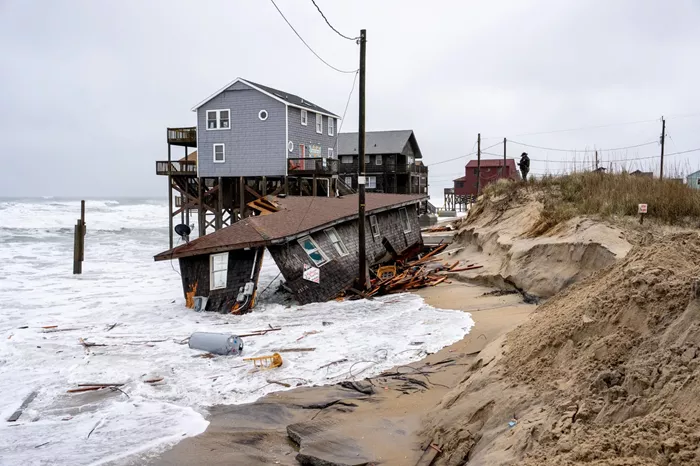A home on Nantucket, once valued at $1.9 million, recently sold for a mere $200,000, spotlighting the growing concern over U.S. coastal erosion.
Significance: The threat of climate change poses a significant economic risk, potentially leading to widespread declines in property values in coastal areas, according to Alice Hill, an expert on energy and the environment at the Council on Foreign Relations. Hill emphasized that 40% of the U.S. population resides in coastal counties.
Recent Developments: In late June, a property on Sheep Pond Road in Nantucket sold for $200,000. This follows the sale of another house on the same street, originally valued at $2.2 million, for $600,000, and the demolition of a home last October due to severe erosion on the island’s southwest shoreline, reported the Nantucket Current.
Shelly Lockwood, a local real estate broker who developed a coastal resilience class for agents, noted that while extreme erosion is affecting a few waterfront areas, property values are generally rising across Nantucket.
Context: According to projections from the National Oceanic and Atmospheric Administration (NOAA), sea levels in Nantucket could rise by 1.15 feet by 2040, 2.36 feet by 2060, 4.36 feet by 2080, and 6.66 feet by 2100.
Sea-level rise, driven by climate change, is accelerating across the U.S.
Broader Impact: The situation in Nantucket reflects a national trend. In North Carolina’s Outer Banks, a beach stretch was closed in May after a sixth house collapsed due to erosion. Similar erosion concerns affect areas like Dana Point in California and Plum Island in Massachusetts.
Threat Level: Rising sea levels exacerbate storm impact, leading to greater erosion, explained Christopher Hein, associate professor of marine science at Wakefield. This phenomenon will intensify the submersion of low-lying areas.
Hill warned that climate change will increase extreme weather events, heightening risks for property insurers who may need to raise premiums to offset losses. Last year, property insurers in 18 states incurred losses, necessitating higher premiums to maintain profitability.
Detailed Analysis: The vulnerability of coastlines to sea-level rise and storms varies, Hein noted. Southwestern Nantucket, with its low-lying, sandy terrain, is particularly susceptible to wave exposure, especially during Atlantic storms. In New England and along the East Coast, nor’easters are the most common storms, exposing northeast-facing coasts to significant erosion risks.
Hein suggested that if erosion rates influence housing values, faster erosion could lower property values due to shorter expected lifespans for structures. The frequency and severity of nor’easters with climate change remain uncertain, but increased activity would heighten erosion risks.
Conclusion: The past decade has recorded the hottest years on record, driven by human-caused pollution, Hill stated. Rising temperatures will lead to more severe storms and accelerating sea-level rise, causing increased storm surges and coastal erosion. These conditions could affect areas previously unaffected by significant erosion.
Hill emphasized that climate change will continue to erode shorelines on islands like Nantucket. While there is no evidence of a “true local collapse” in housing values due to erosion or storms, the current approach focuses on resisting erosion through costly measures rather than considering coastal retreat, Hein remarked.
Lockwood noted that while many homeowners struggle with declining property values, she believes the market will adapt. Some homeowners have responded by relocating their houses, she told Boston.com on Tuesday.






















